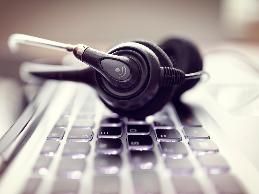From the desk of Teresa Goddard, M.S., Lead Consultant – Assistive Technology Services
There are many devices and apps for phone and face-to-face communication that are designed for individuals who do not speak at all or who find speaking very challenging. These may be helpful to some individuals with voice disorders as well. AAC devices, also called speech generating devices, are an example of a type of technology that can be used by individuals who have difficulty speaking.
AAC can be as simple as an array of pictures to which the user points in order to communicate or may be as sophisticated as a customizable speech generating device that can produce an infinite number of unique messages on demand in a synthetic voice. The quality of synthetic speech is often a concern for new users of AAC. There is now a company specializing in custom synthetic voices and voice banking, called VOCALiD. Another company, Acapela Inclusive, also offers voice banking options for customers who know that they will be undergoing medical or surgical procedures that put them at risk for loss of voice. Voice banking allows one to store recordings of one’s voice for use in developing a customized voice for use with AAC devices should the need arise.
A typical workplace concern is how to communicate by telephone when using AAC devices. JAN provides information on AAC devices with telephone access as well as related accessories and specialized phones. It is also possible to use many AAC devices via a speakerphone. Here is a link where you can find a demo: http://aac.textspeak.com/demos.
We are also seeing a growing interest in speech generating apps, which could potentially be used face-to-face, via a speakerphone, or via a telephone with an adaptor. Below are some examples.
- Speech Assistant AAC
- Proloquo2Go
- Proloquo4Text
- Flip Writer AAC
- Lightwriter (mobile calling)
When AAC is being considered, a professional such as a speech language pathologist may be able to provide valuable insights. ASHA has a special interest group of professionals working in AAC. An evaluation conducted by one or more professionals with expertise in AAC may be helpful in determining what device and access method, for example eye-gaze, is most appropriate for a particular person.
If you are exploring AAC as an accommodation option, it may also be worthwhile to see if the State AT Project in your area would be able to demo some products for you. In some states they may also be able to perform assessments. State AT Projects are funded under the Technology-related Assistance for Individuals with Disabilities Act and support consumer-driven state plans for the delivery of assistance technology.


